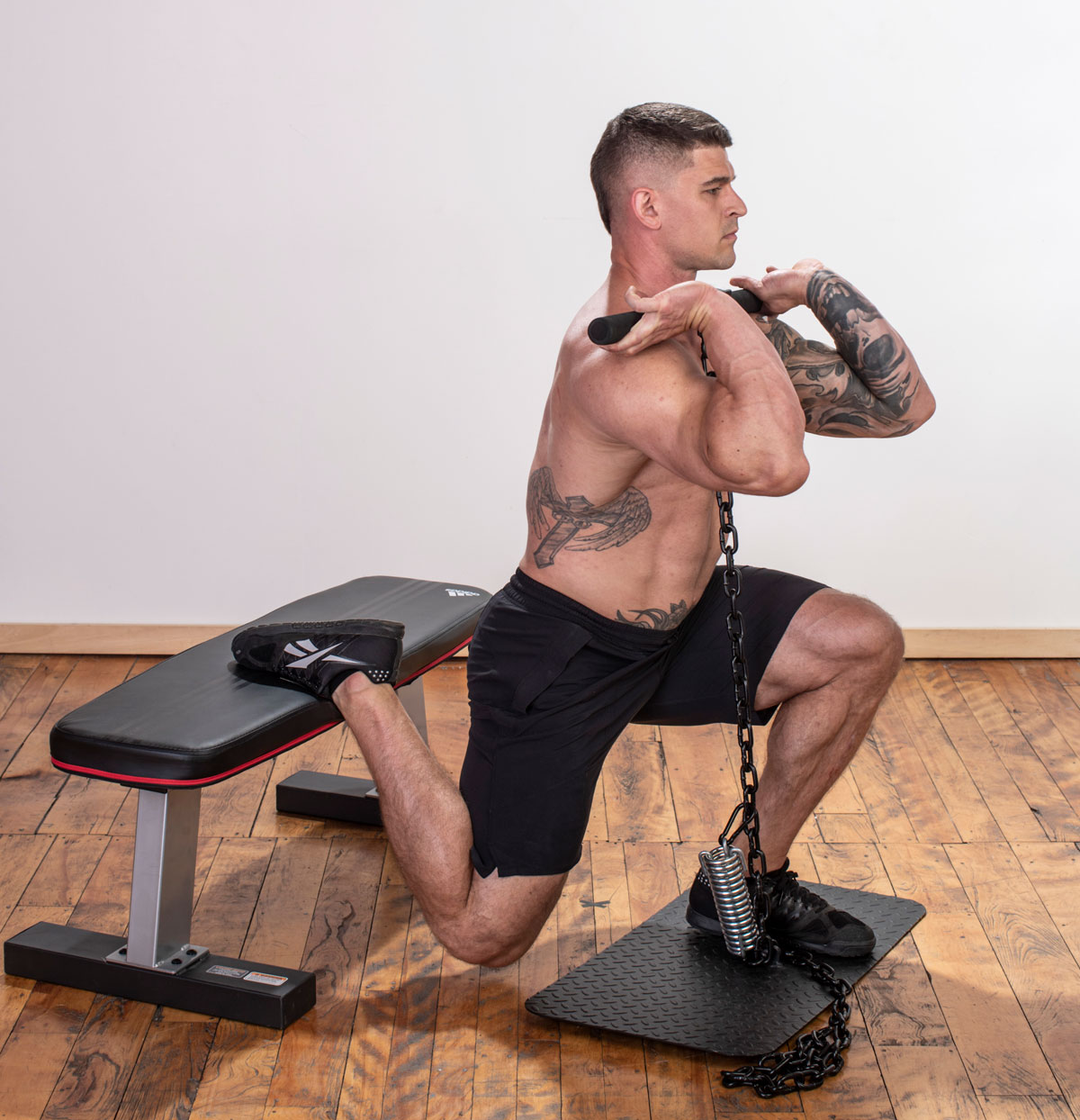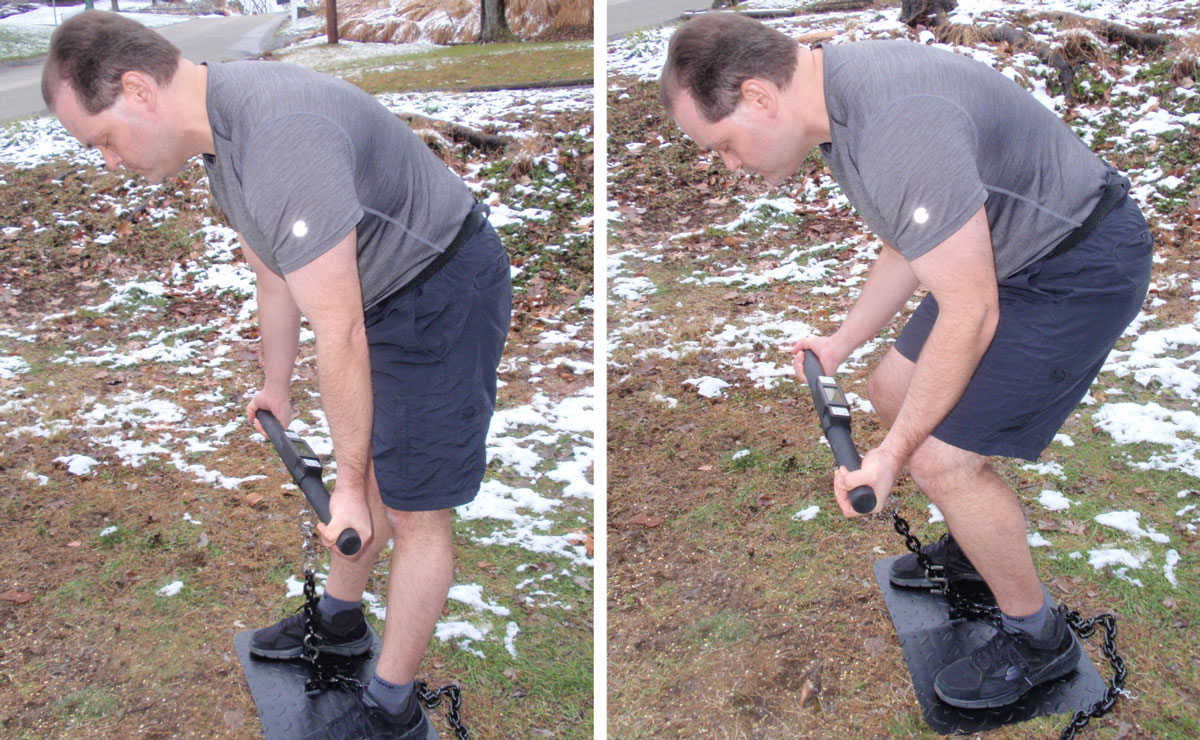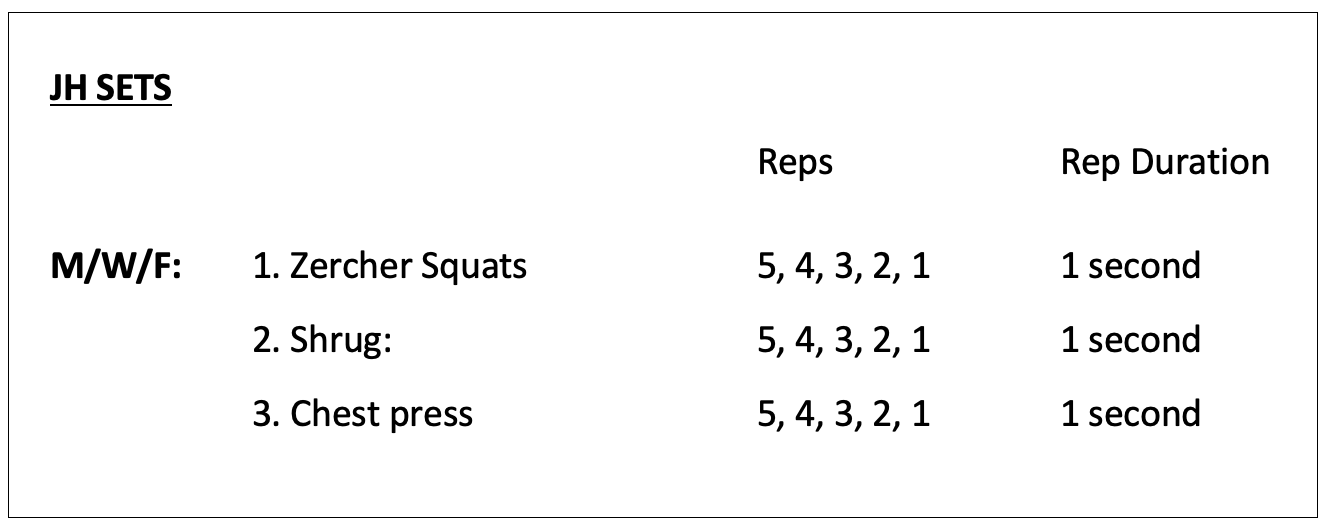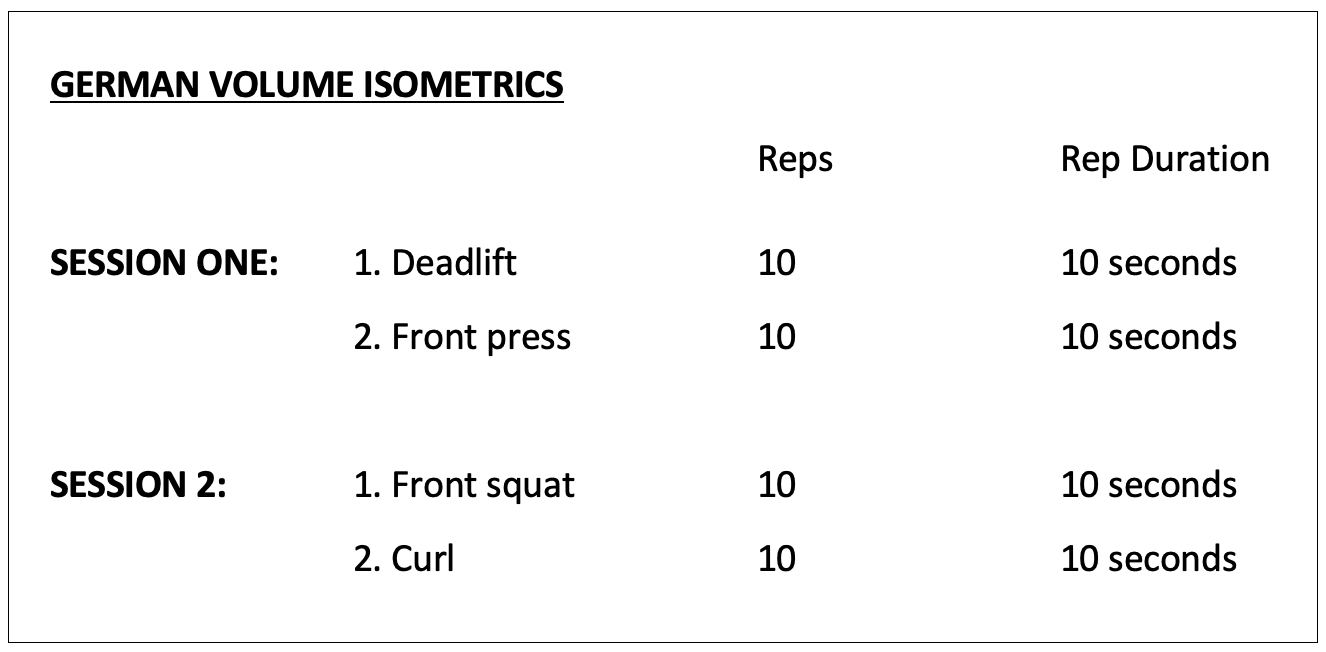Mix It Up! Tips, Techniques and Secrets to Keep Getting Stronger with the Isochain
by Paul "Coach" Wade

Greetings, Chainers!
Today I want to chit-chat with ya about doing something a little different—because, if there’s one thing we’re learning with all the tons of isometric feedback we’ve had, it’s that isometrics—and
Isochain training—works best when we shake it up; frequently, and a lot.
Why?
Habituation. All athletic disciplines—all of them—suffer from the Law of Diminishing Returns. When you train a certain way—with a fixed program—you gain strength and size very rapidly at first, but it slows down over time. To make matters worse, Diminishing Returns is relative to adaptation speed. In other words, the more effective your methodology is and the quicker you make gains, the more rapidly this slow-down occurs.
Isometrics is the most effective and efficient form of strength training on earth; therefore, Diminishing Returns happen quickly. To keep making awesome gains, you need to change your routine regularly.
This sounds simple, but, as it turns out, it has proved to be a bit of a bugbear for a lot of Chainers. I get why. We build strength in lifts like the Isochain top-range deadlift so damn fast, we become emotionally attached. We are loathe to change our drills, sets, reps and hold times, in case we lose those precious numbers—those damn beeps are like crack, am I right?
This is a mistake. Trust me, your absolute strength won’t go anywhere if you try something different for 2-6 weeks. We know from the science that isometric strength—at any age—is the most loyal kind of strength. It sticks around, and, should you happen to regress, you can build your numbers back like lightning. Please,
please, keep changing your program every few weeks—every two months at the most—in order to keep adapting in different ways, gaining new forms of strength and athleticism, and to keep motivation as high as possible. In strength and fitness, longevity is how winning is done.
So, in the spirit of doing something different, here are a few fresh n’ tasty tips and tactics aimed at those of you in a rut. Let’s get adapting again, shall we, boys and girls?
1. Explore New Drills
I am absolutely blown away and honored by how insanely popular The Promethean program has become in the Isochain community. And there’s a reason for this—it’s clear from the feedback that this program has easily built the most strength and beef of any of the methods in the book.
However—this program is not meant to be run all year round. And—worse—when folks tell me about their "current" Promethean, I almost always see the same thing; top-range deadlifts, midpoint curls, and presses around forehead level. It’s obvious why; these angles give the best numbers.
As great as deads, curls and presses are—and for rapid, total-body strength increases, nothing is greater—we need a break from these drills frequently. Why not try something new? Instead of deadlifts, try some unilateral split squats with the rear leg on a chair or bench (see photo above). How about going even heavier, with a
hand-and-thigh lift? Got the pain tolerance for Austin squats? Watch the video below:
Instead of regular old curls, why not try drag curls to charge up those biceps? Ever attempted
McKean curls? Set the bar to around knee level, and bend over to curl with both hands and thigh force—total-body strength and arm power in one bizarre but effective package.
 World record breaker Rob McKean has hit 315lbs in this total-body curl!
World record breaker Rob McKean has hit 315lbs in this total-body curl!
If you have trouble activating your biceps—many strong guys and gals find their forearms and brachialis take over—don’t forget, the biceps also crosses the front of the shoulder; so despite what form-Nazis will tell you, involving the shoulders can help. Set the handle to head height—maybe your chin, maybe your nose, experiment—and curl it up there. Once you get this tricky technique right (this is one you’ll have to really
squeeze) you’ll feel every fiber of your biceps lighting up, like never before—with minimal forearm involvement.
Too many front presses lately? How about a good old-fashioned PBN? It’s not in the manual, but it’s yours for the taking. Not your cup of Joe? Grab a bench and lie back for triceps extensions. These work the entire triceps—all three heads, from top to bottom—as well as the pecs and lats. And all with zero elbow wear and tear. Damn, I love
isometrics.
2. Think outside the box with the Isochain unit
This leads me to another point; as well as altering the drills we are using, we can also customize the gear itself.
The
Isochain is bit of high-tech wizardry in a bar, attached to a spring and a base by a chain. We stand on the base and pull or push at the bar, right?
Maybe not. If you have a hook, rafter (or even a tree branch), why not lose the base and attach the chain overhead? Suddenly you have a world of new, gravity-defying drills in your armory: isometric pulldowns, triceps pushdowns, straight arm lat work, angled curls, etc.
This isn’t the only way to use the Isochain differently. I’ve seen Chainers wind hand towels around each end of the bar—voila, a hammer grip for curls, extensions, rows and other pulls.
I’ve seen hardcore trainers attach the bar to a weight belt—allowing them to perform super-heavy hip squats. I’ve seen athletes stand on blocks to perform low-range pulls. (Iron spinal muscles, anyone?)
If you want to get creative with an
Isochain, there are numerous ways to do it. Isometric icon Chrys Johnson famously made his own bench press attachment. It’s not for everyone, but if you want to try something completely new, these options are there for ya.
The above are just a few examples of variations I’ve seen in the wonderful
Isochain Isometric Users Group on Facebook. The members there are posting new approaches and techniques all the time—things the design team never even thought of! If you are creative and love isometrics, head on over and join in.
3. Pound some reps: Joe Hartigan sets
The act of holding a heavy exercise—and hearing those beeps—is pretty cool and addictive, but again, we don’t need to do it all the time. If you’ve been busting out a lot of
holds in the 6-10 second range, why not switch up to a diet of regular
reps that only last a second or so? This is a lot more like conventional training, and moving from "holds" to "reps" is a refreshing change of pace for iso-heavy warriors.
Here’s a simple routine, using a set-and-rep scheme favored by my mentor, Joe Hartigan. Warm up for each drill, then set your Target Load to 70% of your max. Using Timed Mode, smoothly build up tension for each rep each drill until you hear the beep—i.e., one second. (It doesn’t matter how long the Target Time is set for—you’re only looking for that first beep, anyhow.) Do this for a set of five reps. Then a set of four reps. Then three, then two, then one.
In between sets, put the
Isochain down and wander around a little, stretching or shaking your muscles loose. Take 40 second breaks between sets and keep the breaks consistent—use your smartphone or an eye on the clock to time them.
I like this program with three drills; a
leg drill (pick from front squats, hack squats, Zercher squats), a
pull (pick from shrugs, high pulls or bent rows) and a
press (pick from lying extensions, chest press, or front press).

If this is too much for you, drop the second exercise and just use the leg drill and press drill.
When you can get all the reps for a drill, add 10-20lbs to the Target Load next time. You probably won’t always be able to get 5, 4, 3, 2, 1, every time. Expect to fail as time passes. This is all good—unless you overstep your limits, how will you know what they are? If you fail, just try to add a rep or two next session.
This here doc’s prescription is a diet of this brutality, three times per week for a four-week period—then flip back to longer holds.
This is an interesting way to train—the brief holds allow you to really jack up the force levels in each drill. I’ve only had three of my students perform a cycle of JH reps on the
Isochain, but the strength gain for each of them over four weeks was absolutely nuts. Are you able to punch through brick walls?
You will be.
4. Pump up the volume
Here’s another way of shaking loose from the mundane—let’s take a famously crazy (but productive) dynamics program, and apply it to
isometrics.
German Volume Training—also known as the 10 x 10 method—was widely used by East German weightlifters during the offseason to gain large slabs of muscle and move up in weight classes. The method is simple (simple does not, of course, mean "easy"). Use a lighter weight and perform ten sets of ten reps in basic exercises.
 Old school weightlifters knew a thing or two about adding size.
Old school weightlifters knew a thing or two about adding size.
This method breaks a lot of rules; the weight you are using is too light, the volume is too high, recovery is compromised, blah, blah, blah. But we are trying something new here, right? And this approach is great because it helps us break the glamor of those super-heavy numbers. Besides, the results in muscle gain will speak for themselves—trust me.
We can apply this training concept to the Isochain; instead of ten reps, let’s go for ten-second holds, performed ten times per drill. I would use this for only two drills, on alternate days; for example:
 Keep recovery strictly old school.
Keep recovery strictly old school.Alternate Session 1 and 2 three days per week—with a day off in between—
and take weekends off for good behavior.
Begin with a Target Load of around 50% of your max lift, and use Timed Mode, custom set to ten seconds. Take about 20-30 seconds break between sets, and try and keep this consistent. Every time you can get the ten sets of ten seconds, crank the Target Load up by 10%. If you fail at holding a set long enough, you get 1-2 more tries—if you still fail, quit that drill for the day, and keep the Target Load identical until you can whup it. If you really want some masochistic excitement, next time you try this, give ten sets of 20 second holds a shot, and see if you escape in one piece to tell the tale.
Get ready for some pain and gain, kids! You’re welcome!
****
Before I go: here’s an epic training secret for ya—for free. Do you want to know how to continually break PRs,
every time you train?
Here’s how...
...ready..?
Try new things.
It’s that simple. If you are constantly trying something you’ve never done before in every training cycle, you’ll keep making progress week by week, month by month. Try new drills, develop tweaks on old drills, explore new angles, new hold times, new volume, new frequency; new ways of combining
isometrics with other methods. New skins for new wine, brother. It’s great to record your progress on different drills and programs. Do it. But don’t be afraid to move on from those numbers to something different. You can always return to them again, at a higher turn of the spiral.
‘Nuff said. Try something new, soon. Go get growing that mind and body.
Back